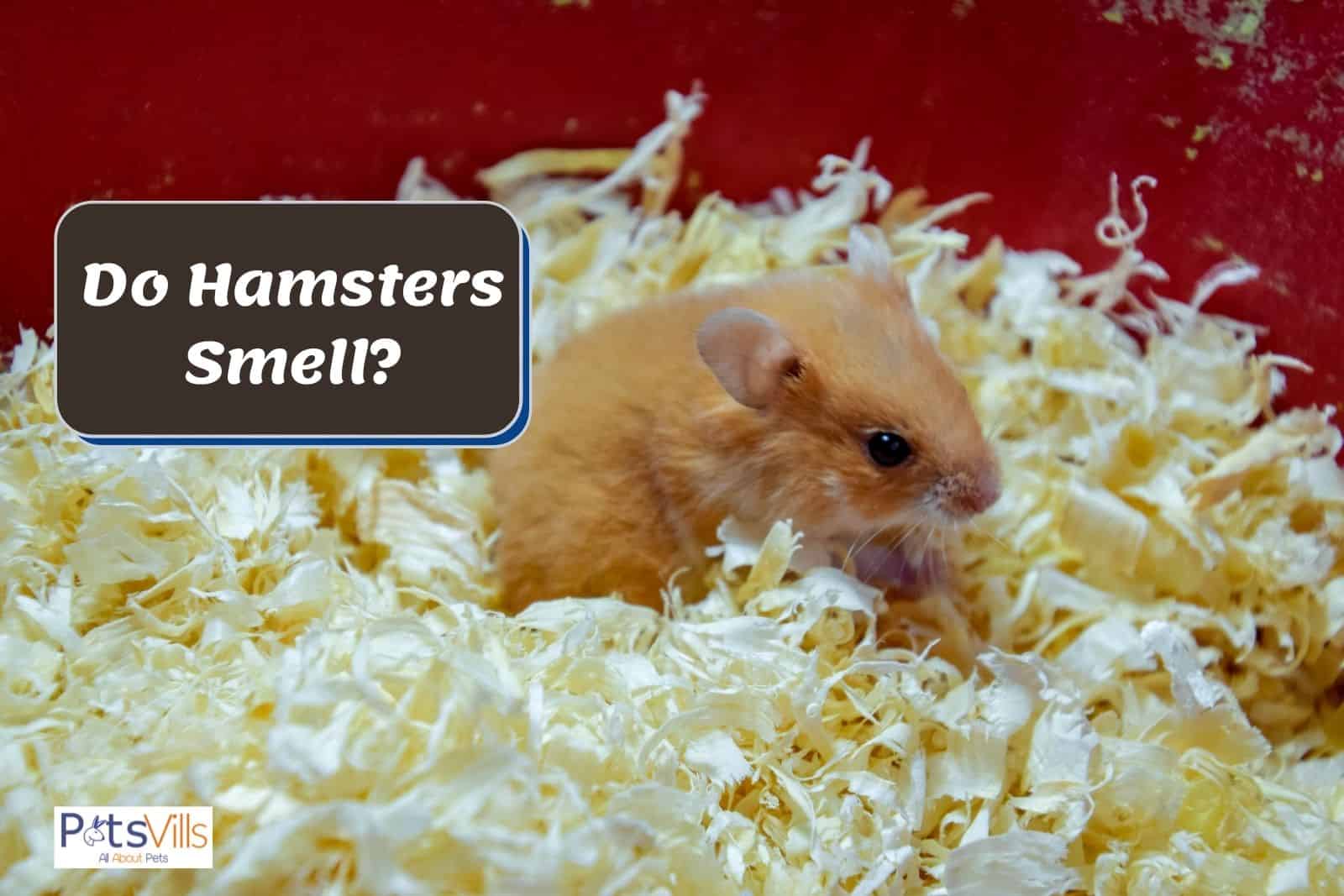Do Hamsters Smell?
In general, they are spotless animals and won’t typically smell unless you haven’t cleaned their cage for a long time. (a couple of weeks).
If your hamster smells, there could be a few reasons why.
Let’s explore!
Table of Contents
Do Hamsters Smell?
No, typically speaking, hamsters do not smell. [1]
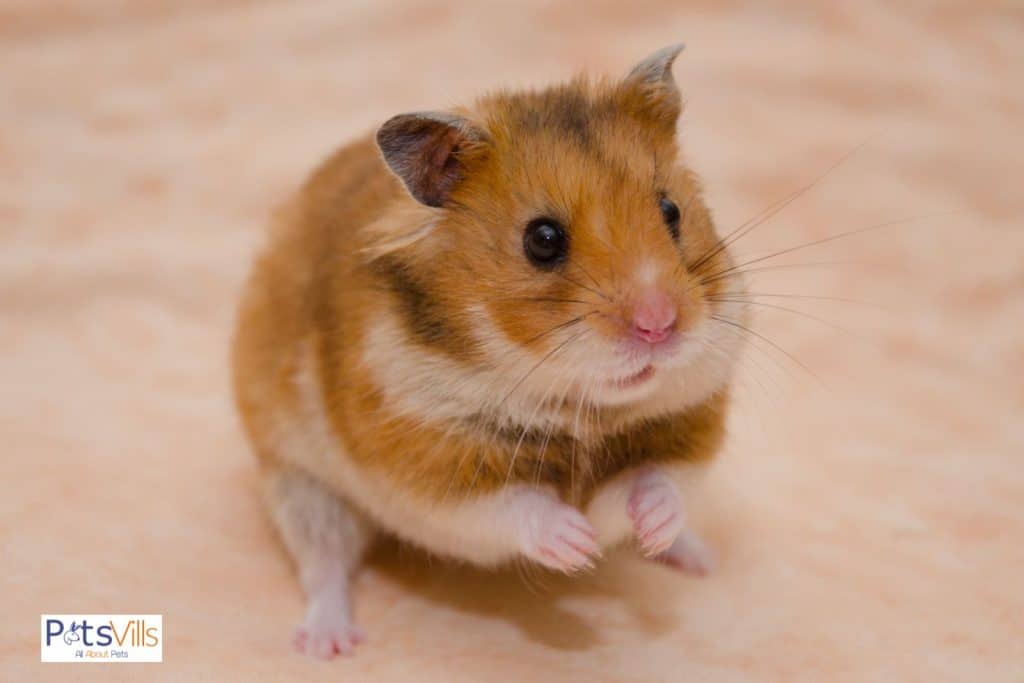
Compared to some other rodents, hamsters don’t usually smell unless their cage is dirty or if they are ill.
So, if you don’t spot clean your hamster’s cage every week, then, yes, they may start to smell.
Basically, you should be spot cleaning their cage weekly and only giving them a deep clean when they need it.
On the other hand, you shouldn’t clean your hamster’s cage out too often as it can induce stress and shorten the lifespan of your hamster.
NOTE: Smaller hamster cages tend to be cleaned more regularly as they are smaller and will start to smell quicker.
If your hamster smells and you’ve recently cleaned its cage, you need to start investigating other causes. Let’s discuss this.
Check out this video for some great tips!
Why Do Hamsters Smell?
The odor that’s coming from the hamsters is most likely not from them. Hamsters are very clean creatures and will groom themselves very often.
Below are the 3 common reasons why your hamsters smell:
1. Hamster Smell Due to Leftover Foods
Foods that are put in their cage can sometimes fall into the bedding. Over time, it will start to rot and smell.
If you feed them pellets, most likely, they will be placed in a bowl. Pellets tend to break into bits and pieces as the hamsters eat them. These small pieces of pellets will drop into the cage.
Over time, as the hamsters drink water, some of it may drop onto the pellet pieces. From this, it will start to become moist and get contaminated with bacteria and mold. Left for a long time, it will start giving off a bad odor.
The same goes for other food that you give them such as vegetables, fruits, and grains. All of these foods are perishable and will start to rot if it’s not cleaned from their cage.
2. Hamster Smell From Urine
Hamsters are clean creatures and will usually try to keep urinating as far from their sleeping space as possible. For that reason, they will usually urinate in a corner of the cage. They will urinate at the same corner every day.
In the wild, they will urinate far from their den to prevent the scent from being detected by predators.
After a couple of days, the urine will start to produce an odor if it’s not cleaned. This odor will start to spread throughout the cage and even on the hamster.
3. Hamsters Smell Due to Infrequent Cleaning
In the cage is where the hamsters spend most of their time. This includes eating food, sleeping, and going to the bathroom.
Therefore, all the leftover food and urine will start to seep to the bottom of the cage and produce an odor. The odor is usually from mold and bacteria growing on them.
If the cage is left too long without any cleaning, it will start to make the hamsters smell as well.
What to Do If Your Hamster Smells
If you find that your hamster does smell, you may need to pay more attention to your hamster’s cage.
It won’t be the hamster that smells and rather the cage he is living in. Therefore it is vital to make sure that you clean your hamster’s cage regularly and make sure that you clean it to a good standard.
You need to make sure that your hamster’s cage is well-ventilated.
If your hamster’s cage is in a location that is small or stuffy, you will need to consider moving it to a better place.
It is important to remember not to place your hamster’s cage in a drafty area as it may not be the best living condition for your hamster.
CHECK: Do Hamsters Eat Their Own Babies?
How Often Should You Clean Your Hamsters Cage?
It would be best to spot cleaning your hamster’s cage weekly and clean them out when needed.
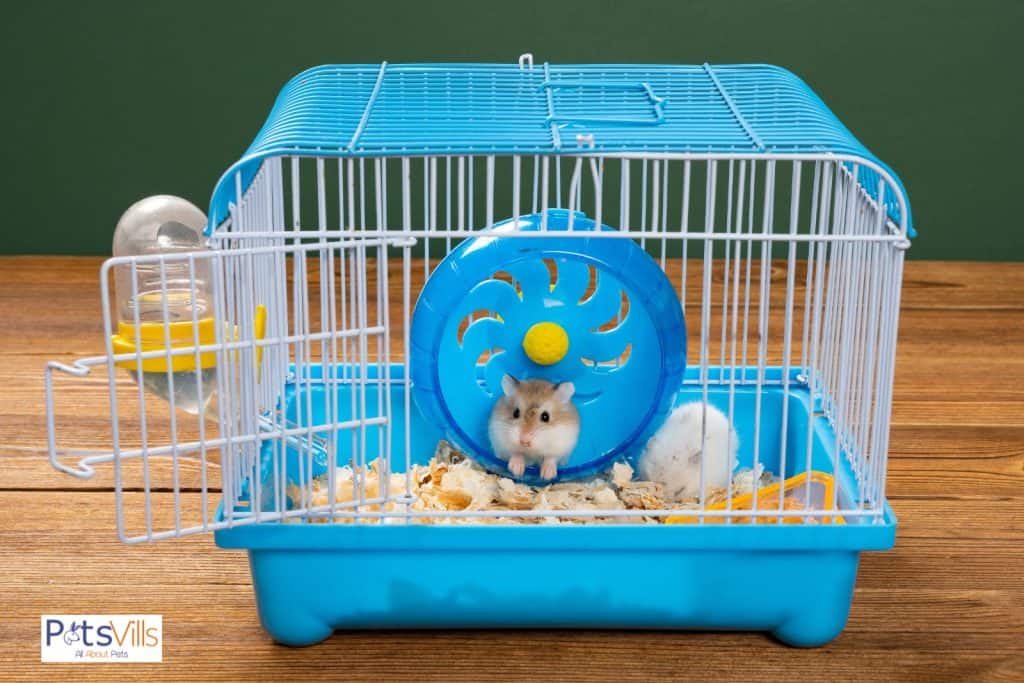
It is important not to clean your hamster’s cage too often as it causes stress to your hamster due to the changes in smells and different bacteria.
How often they need to be cleaned will depend on the size of your hamster’s cage and how many hamsters you have.
If your hamster has a large cage, it is likely not to need to be cleaned as often as the waste will be spread across a larger surface area and likely not smell as much.
You’ll need to clean your cage out more often if you own more hamsters.
The more hamsters you have in a cage, the more waste there will be.
If your hamster’s cage gets dirty quickly, you will need to clean it more often.
CHECK MORE: How Do Hamsters Drink Water?
How to Clean Your Hamsters Cage
- First of all, you will need to take your hamster out of his cage and place him in a safe place. For example, in an exercise ball, temporary box, or bathtub. You should keep a close eye to make sure that he/she doesn’t escape.
- Next, remove all of your hamster’s accessories and put these to one side so that you can clean them shortly. Remove all of the bedding that is in the hamster’s cage and begin to dispose of this.
- Now that your cage is empty, use a hamster-safe spray and a soft cloth to clean out the hamster cage. You may have a specific cloth that you use to clean out your hamster’s cage and this needs to be disinfected between cleaning. Ensure that you thoroughly remove all waste and bedding and if the cage has any bars, these will also need to be cleaned.
- It is now time to clean all of the accessories that you have taken out of the cage and these will need to be cleaned in the same way that you cleaned the cage itself.
- Allow time for the cage and accessories to dry and then refill the cage with fresh bedding and place all the accessories back into the cage. Make sure that the cage has enough time to dry, as your hamster can catch a cold if they sleep on damp bedding.
- Your hamster’s food bowl and water bottle should be cleaned last and then refilled before you place them back into your hamster’s cage. It is important to thoroughly and regularly clean these items in order to keep your hamster healthy.
- Your hamster is now ready to go back into his clean and tidy cage. If you find that your hamster is more comfortable in their cage when they have some of the soiled bedding mixed in with their clean bedding. You could place a small amount of your hamster’s soiled bedding into the clean cage. This can be comforting as it carries your hamster’s scent.
- Finally, allow your hamster some time to get used to their new, clean home before you go to pick him up again.
Here’s a video tutorial.
Check: Do Hamsters Need Sunlight?
I Have Cleaned My Hamster Cage and He/She Still Smells!
If you feel that you are keeping on top of cleaning your hamster’s cage, but your hamster still smells, you may need to take a trip to your vet.
This way, your vet can ensure there is no medical reason for the smell, as an unusual or unpleasant smell could indicate an underlying health issue.
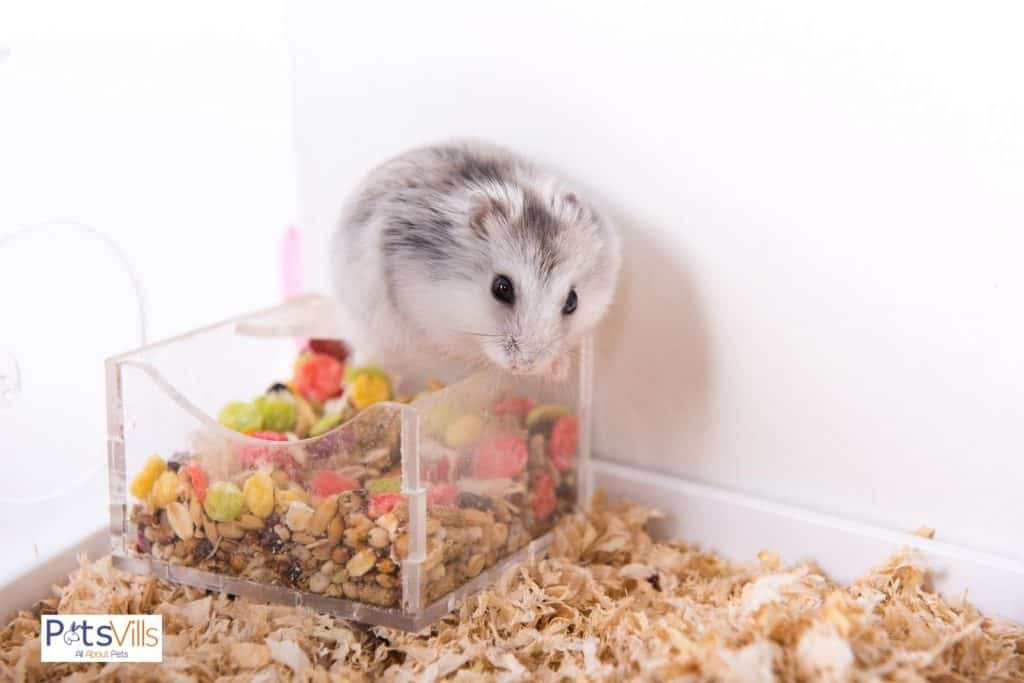
You could also look at your hamster’s diet [2] as some foods can cause unusual smells, and therefore you may be able to improve the scent that your hamster is giving off if you change his diet.
Look out for days when your hamster smells particularly bad, and then note down what you have fed your hamster previously.
Should I Bathe My Hamster If They Smell?
You should never bathe your hamster in water.
Hamsters are not attracted to water, and water is just likely to aggravate a hamster and can make them very ill as it weakens their immune system, which leaves them vulnerable to illnesses.
Hamsters clean themselves by grooming themselves, but it is possible for waste sometimes to get stuck in their fur.
If this happens, you can use a pet-friendly waterless shampoo with a soft cloth to wipe where your hamster cannot clean themselves. Be very careful not to get the shampoo near your hamster’s mouth or eyes.
You can also give your hamster a sand or dust bath. There are sand and dust that are specially made for hamsters.
It works by removing excess moisture, dirt, and oils from their fur cut.
When animals such as hamsters roll around in the sand or the dust, it absorbs any dirt or oil from the animal’s fur and helps to keep the fur healthy.
Some hamsters are known to enjoy playing in the sand, so cleaning the hamster also becomes an active source of entertainment.
In general, a sand bath is recommended over a dust bath, as a dust bath may cause respiratory issues for some hamsters.
READ MORE: Do Hamsters Teeth Keep Growing?
Check out this video on how to take care of a hamster’s teeth.
Do Male or Female Hamsters Smell More?
Female hamsters are in heat every four days, and during this time, they will give off a musty smell [3]. Aside from this, female hamsters tend to be smell-free.
As male hamsters do not go into heat, they are odor-free.
The only time that hamsters smell is when their cages need cleaning out.
READ MORE: Do Girl Hamsters Get Their Period?
Do Hamsters Smell When They’re Scared?
Female hamsters give off a scent when they are in heat.
Female hamsters can also give off a similar smell when they are scared, as, in the wild, this smell is a signal to warn others to stay clear!
Do Hamsters Smell as Bad as Mice?
Mice are notorious for being smelly, and that’s especially the case for male mice. Male mice place their scent (urine) all over their living space as this makes them feel happy and secure. This causes a pungent smell.
Female mice don’t smell as much.
On the other hand, Hamsters do not tend to smell as much as mice. Hamsters are very clean animals. They like to groom themselves and keep things tidy.
Hamsters tend to smell if they don’t use a litter tray and their cage hasn’t been spot cleaned for a while.
How to Train Your Hamster to Use a Litter Tray
Hamsters are easy to toilet train and will use a litter tray if it’s put in place. Hamsters prefer to put their litter in one place.
If you decide to litter train your hamster, you will first need to ensure you’ve got all the equipment you’ll need.
First of all, you’ll need to find a litter tray when it comes to finding a litter tray for your hamster. Your local pet store or online pet store should have a litter tray.
There are plenty of litter trays to choose from, and they are relatively inexpensive.
Some litter boxes tend to be covered, which means the smell will stay within the box. Another option is a litter pan with high corners, and these work as well as the others.
Once you have selected your litter tray, you will need to consider what kind of litter to get. If you struggle to find hamster litter, then look for cat clumping litter, which is scent-free and dust-free. Avoid litter that contains silica dust.
There are other options to choose from when it comes to litter. You can select litter made from grass, paper, grain, or wood. These are also a good option, and they can help control smells, as they are very absorbent.
If your hamster likes to fill his cheeks with the litter you have chosen, you will need to change to a different type of litter as some litter can scratch your hamster’s cheek pouches.
You are now ready to toilet train your hamster, and your next job is to locate the corner where your hamster already goes to the bathroom and place the litter tray in that corner.
If you decide to put the litter tray in an area you prefer, your hamster will ignore it and go to the bathroom where he chooses.
Pour some glitter into the tray so that the bottom of the tray is covered. Now add some of your hamster’s soiled bedding to the litter.
Place your hamster in his new litter tray, so he has the opportunity to sniff around and explore his new toilet.
Never force your hamster into his litter tray, as this may put him off and may result in him biting you in return. Your hamster will soon work it out for himself once he has had time to explore his new litter tray.
If your hamster is using his litter tray as a place to eat or hide his food, then it could be that his cage is too small. That’s why he’s looking for a new area to place his food.
If your hamster is using his litter tray as a bed, it may be that he doesn’t like where he’s sleeping at the moment, or he doesn’t have a sleeping area.
FAQs
How often should I change my hamster’s bedding?

You should spot clean your hamster’s cage weekly and deep clean it when their bedding is wet or starts to smell. This is usually once a month.
How often do hamsters poo?
Hamsters poop a lot, but luckily it doesn’t smell and comes out in hard little pellets that are easy to clean. A hamster will usually poo in one spot inside the cage.
What’s a cage size requirement for hamsters?
A hamster cage size should be a minimum size of 24 inches x 12 inches x 12 inches.
Conclusion
Hamsters are one of the cleanest creatures that you can have as a pet. If you’ve picked them up to play with and they give off a bad smell, check their cage first. If you don’t see anything, it could be their gland.
If so, you’ll need to take them to the veterinarian for further examination. It could lead to a more serious problem so it’s best to get your hamster’s problem taken care of as soon as possible.
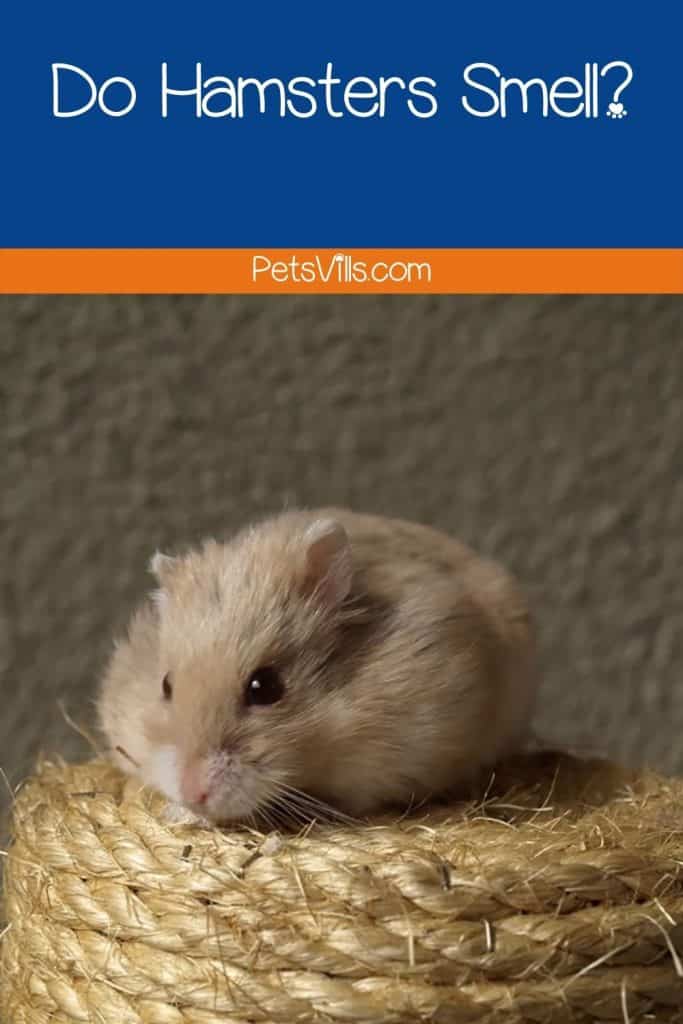
Do hamsters smell? What about your cute hamsters? Please share with us below!
Resources
- 1. Manual B. Hamster Facts: Diet, Habits & Types of Hamsters [Internet]. Live Science. Live Science; 2014. Available from: https://www.livescience.com/27169-hamsters.html
- 2. petMD. What Can Hamsters Eat? Carrots, Grapes, Tomatoes, and More | petMD [Internet]. Petmd.com. 2016. Available from: https://www.petmd.com/exotic/nutrition/evr_ex_hm_what-can-hamsters-eat
- 3. Maras PM, Petrulis A. Olfactory experience and the development of odor preference and vaginal marking in female Syrian hamsters. Physiology & Behavior. 2008;94:545–51.
Alina Hartley is a small-town girl with a ginormous love of bearded dragons. It all started with Winchester, a baby bearded who was abandoned at the shelter by his former owners because of a birth defect that caused one front leg to be shorter than the other. Alina originally went to the shelter looking for a guinea pig, but one look at Winchester and it was love at first sight. From that day on, Alina has dedicated her life to learning everything she can about bearded dragons. She loves helping new beardie parents start their incredible journey with these magnificent reptiles.
Follow her on:
LINKEDIN
TWITTER.
Read her latest articles HERE
Learn more about her HERE.

